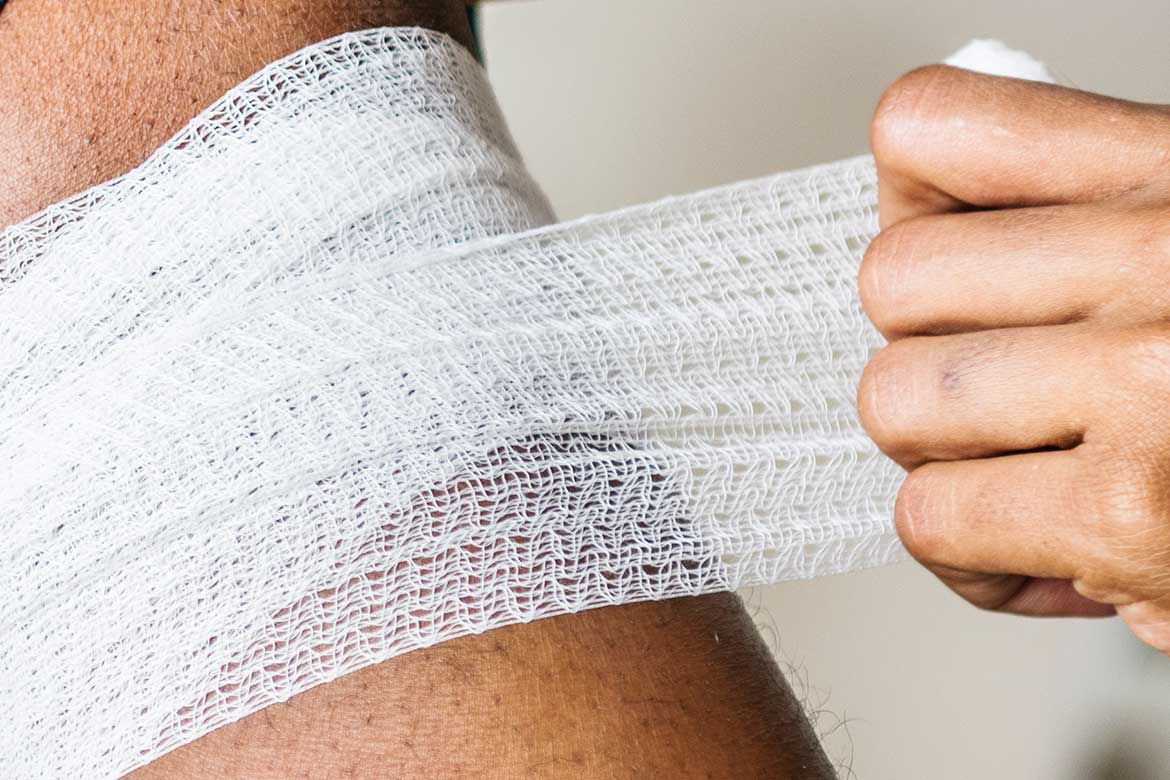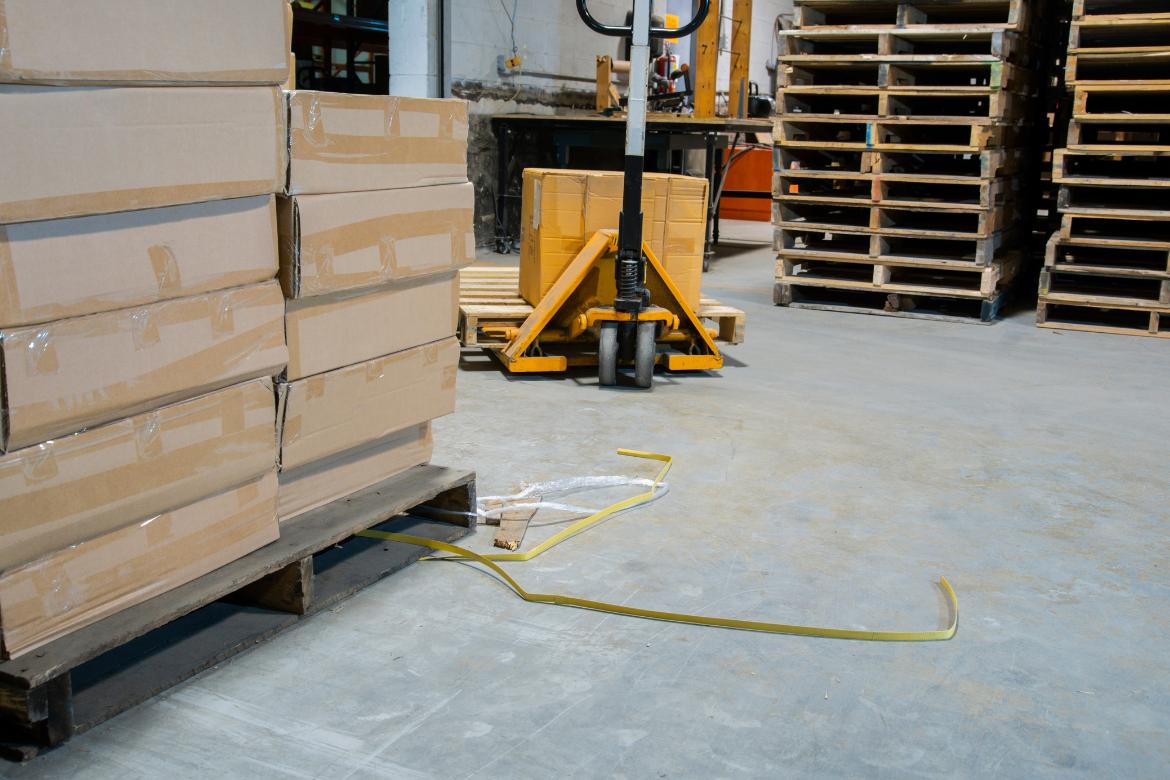23rd July, 2025
No Injuries, No Health And Safety Problems!?
It's been over a year since the last injury in your workplace. But just because you haven't had any accidents doesn't mean you are safe or that your health and safety performance is good. Your accident reporting system might just be hiding the truth. No injuries, no problems!? Don't count on it.

You may be familiar with the "X days" since signs. "X days since the last accident", "X days without an injury", "X days since a reportable incident", etc.
These health and safety signs are often displayed in workplaces as a safety badge of honour. They are also used as an incentive. A common goal is to get everyone to work together to keep that number rising and beat your last accident-free streak.
"We're a hundred days without an injury, wahoo!".
And avoiding injuries is something to be proud of, of course.
You might have also seen these signs in TV shows and films, and they are often used as a parody for a workplace with poor health and safety standards, and it's either used ironically or the sign has to be frequently reset.
There's nothing wrong with the idea behind the signs, or being proud of the time you have been accident-free. The problem comes when you use reported injuries as your only health and safety performance indicator.
If you have no injuries on that board, you can pat yourself on the back and know that your health and safety procedures are top-notch... right?
Well, not necessarily.
Just because you haven't had any accidents for several days - or even a whole year - doesn't mean your workplace is safe. It might surprise you that the opposite could be true.

Let's consider the averages. In 2023/24 there were 138 fatal injuries to workers and 61,663 non-fatal injuries to employees reported under RIDDOR. At the time of writing this blog post the ONS estimate 30.4 million people are employed in the UK. A very basic calculation (not taking into account industry or type of work) gives you around a 0.2% chance of being killed or injured at work on average.
So if you haven't had any injuries for weeks, months, or even years, that doesn't mean that health and safety standards are good. It might just mean that an accident hasn't happened yet. Or that other types of harm are happening. Or that near misses or minor accidents are not being reported.
An accident hasn't happened yet
The number of reported accidents and injuries is relatively low in most companies. Unless you employ thousands of people, accidents just are not going to happen that frequently.
Because of this, your accident statistics produce a low amount of data, and therefore a limited amount of information. It can't reliably be used, by itself, to measure your health and safety performance.
But just because an accident hasn't happened yet, doesn't mean your workplace is safe.
Even if you have really poor health and safety standards, your workers will try not to get hurt. And they may succeed, for a time, despite the hazards and risks they face.

And if you are waiting for a reported injury to alert you that there's a health and safety problem, then that means someone has to get hurt before you make it safer. And it shouldn't be that way. The law requires you to reduce risk as low as is reasonably practicable (ALARP), not after the event, but as part of your planning and preparation.
So what hazards are your workers trying to avoid? Identify the hazards, and make your workplace safe before an accident happens!
Other types of harm are happening
You might not have any injuries. And your sign might say "X days without a workplace injury", and that's great. But injuries are not the only health and safety problem to avoid.
You may have workers getting ill from exposure to hazardous chemicals, dust, or fumes.
You might have workers developing hearing loss from noise exposure.
Or problems with their hands from exposure to vibrating tools.

Or skin problems from contact with irritants.
Or lung disease from breathing in contaminated air.
Or alcohol abuse caused by work-related stress.
None of these issues are injuries, but they are all health and safety problems.

You might not have any injuries. But harm could still be occurring in your workplace, through ill health. Protecting your team from ill health is just as important as protecting them from injuries - the majority of work-related deaths aren't from safety failings but health risks.
An injury hasn't happened yet
You might not have injuries. But you may have plenty of dangerous conditions that could cause harm:
- A cluttered workplace.
- Blocked fire exits.
- Exposed edges creating a fall risk.
- Unplanned lifting activities.
- Untested equipment.
- No emergency arrangements.
You might not have injuries. But you may have near misses happening weekly where members of your team are narrowly avoiding getting hurt. For example, workers tripping over trailing cables, materials falling from scaffolding, tools breaking, or blades slipping.

And if you do have near misses, those near misses are accidents waiting to happen. You've just been lucky so far.
Near-miss reporting is just as (if not more important than) accident reporting. By gathering data on near misses in your workplace, you can identify problems before they turn into injuries.
An injury has happened but you don't know
You might even have injuries. But maybe they are minor, so nobody bothered to report it. But next time someone trips on that wonky floor or slips on that spill, they might seriously hurt themselves.
Like the near-misses we just discussed, finding out about minor accidents can help you to make the workplace safer so there isn't a next time.
You might even have a problem with underreporting in your workplace.

Maybe someone got hurt on day 199 of your accident-free streak. So close to 200 days! And they might decide not to report so that the accident-free streak remains in place. They don't want to let their colleagues down, or break morale, especially since it's related to the end-of-the-year bonus.
If limited data on injuries is not the best way to measure health and safety performance, what's the alternative?
In most cases, you should supplement the data with other indicators. You can look at accident statistics across your entire industry (using HSE statistics) to determine high-risk activities. You can use near-miss reporting to identify problems before accidents happen. You can monitor the health of your workforce to find places where further controls are necessary. You can carry out spot checks on-site to see if safety rules are being followed.
Just because you haven't had any accidents, doesn't mean you are safe. What about the potential for future accidents and injuries? What about workers health? What could go wrong, what is going wrong, and how can it be stopped before an accident happens? Because if you just wait for a reported injury to tell you things have gone wrong, you've left it too late.
If you only record injuries, consider collecting more health and safety data for better monitoring of your health and safety performance. Consider adding near misses and health surveillance to your internal accident reporting procedure.
This article was written by Emma at HASpod. Emma has over 10 years experience in health and safety and BSc (Hons) Construction Management. She is NEBOSH qualified and Tech IOSH.
Better health and safety...
We are here to help you and your business put safety in everything.
Learn MoreRecent posts like this...

HSE Fee For Intervention Charges Explained
FFI stands for 'fee for intervention', which was introduced under the Health and Safety (Fees) Regulations 2012. FFI aims to recover the HSE's costs, including inspection, investigation and enforcement action, charging businesses that are in breach of health and safety regulations.
Read Post
How To Plan For Better Health And Safety At Work
If you want better health and safety, you need to plan for it. And who doesn't want to stay safer and have fewer accidents and ill health in their workplace? In this blog post, we look at how to plan for better health and safety at work.
Read Post
No Injuries, No Health And Safety Problems!?
It's been over a year since the last injury in your workplace. But just because you haven't had any accidents doesn't mean you are safe or that your health and safety performance is good. Your accident reporting system might just be hiding the truth. No injuries, no problems!? Don't count on it.
Read Post